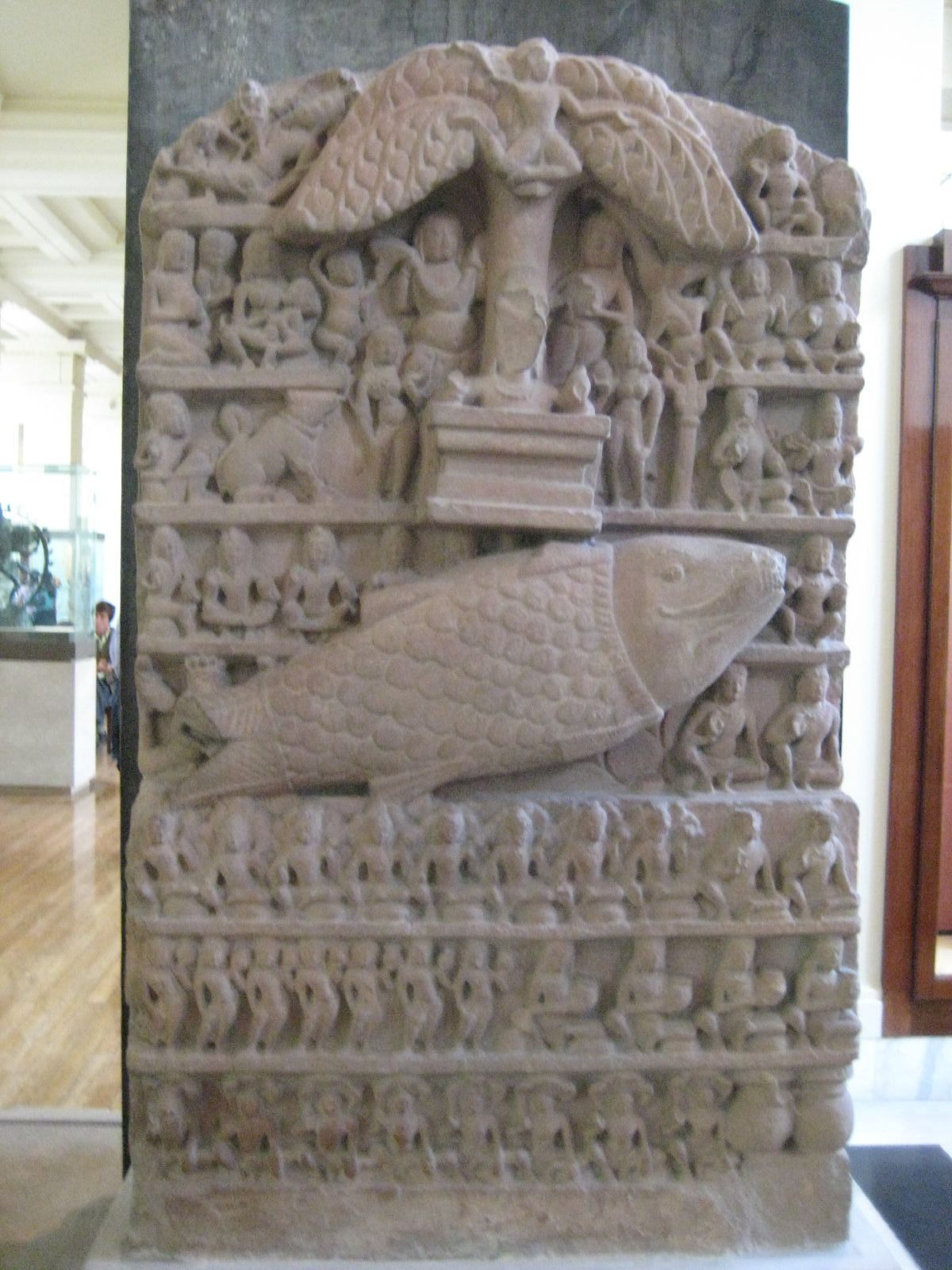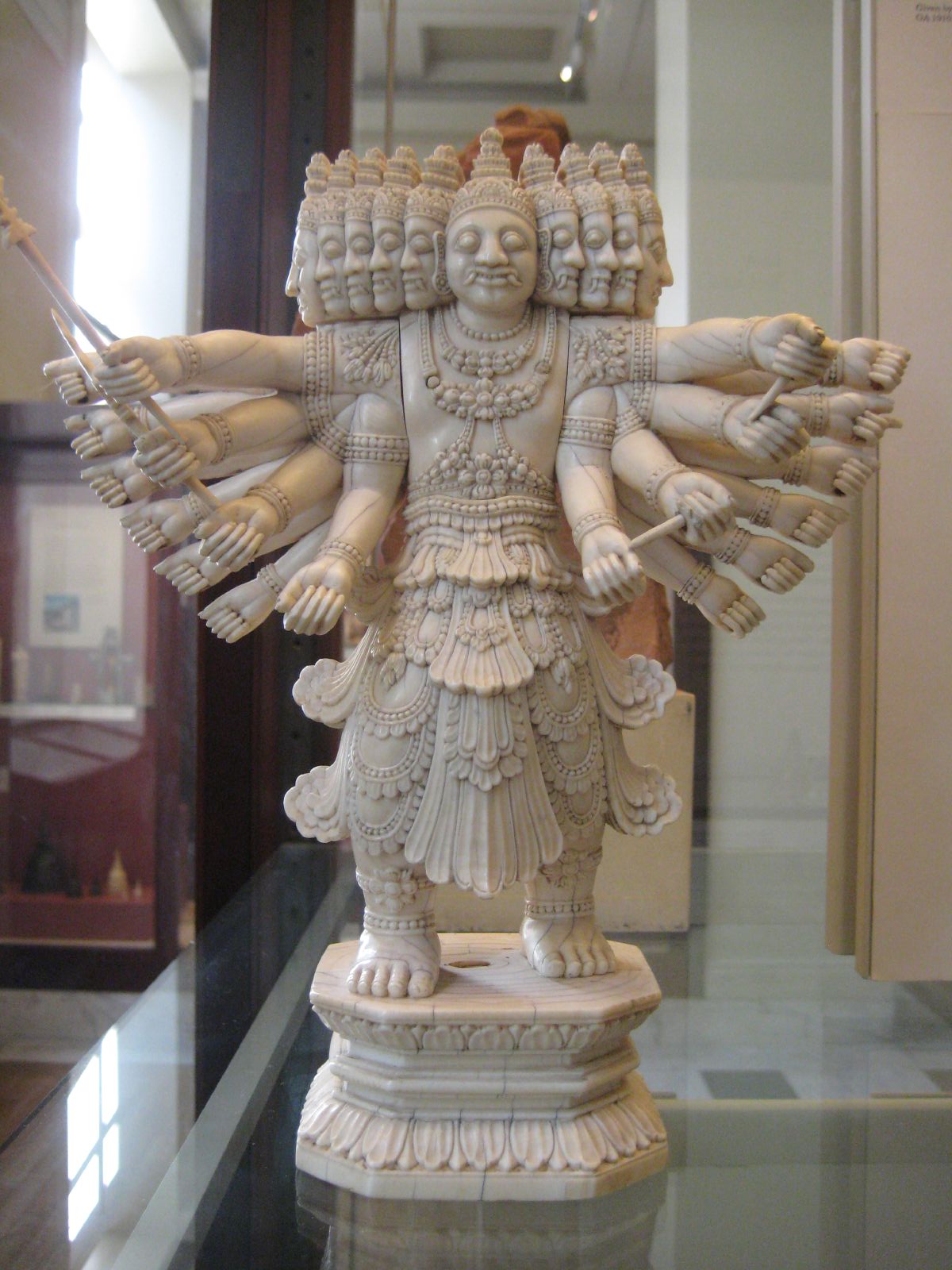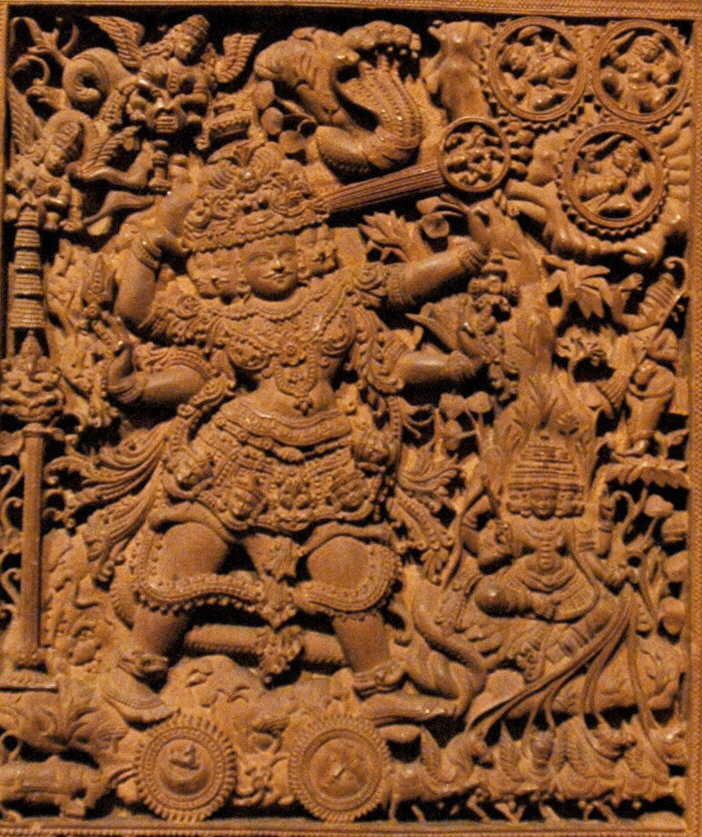|
Danava (Hinduism)
In Hindu mythology, the danavas are a race descending from Kashyapa and his wife Danu, a daughter of the progenitor god, Daksha. It is mentioned that there are one hundred danavas. Origin The danavas are a mythological race of demigods, the half-brothers to the devas and daityas that are found in a range of Hindu texts. The danavas are a part of a larger group of the asuras, and are typically portrayed as opposed to the Hindu deities. However, historically, their role in Hinduism is varied and at times, the distinction between the danavas and Hindu deities is complex and they are difficult to distinguish from one another. Etymology The name ''danavas'' stems from the mother's name: Danu. Both danavas and Danu are derived from the Vedic word ''Da'' meaning 'to give.' Ananda Coomaraswamy suggests this word connotes generosity. Another interpretation of their name is associated with Danu's relationship with her first son (and demon), Vritra. In Indian mythology, in an at ... [...More Info...] [...Related Items...] OR: [Wikipedia] [Google] [Baidu] |
Matsya
Matsya ( sa, मत्स्य, lit. ''fish'') is the fish avatar of the Hindu god Vishnu. Often described as the first of Vishnu's ten primary avatars, Matsya is described to have rescued the first man, Manu, from a great deluge. Matsya may be depicted as a giant fish, often golden in color, or anthropomorphically with the torso of Vishnu connected to the rear half of a fish. The earliest account of Matsya is found in the ''Shatapatha Brahmana,'' where Matsya is not associated with any particular deity. The fish-saviour later merges with the identity of Brahma in post-Vedic era, and still later, becomes regarded with Vishnu. The legends associated with Matsya expand, evolve, and vary in Hindu texts. These legends have embedded symbolism, where a small fish with Manu's protection grows to become a big fish, and the fish saves the man who would be the progenitor of the next race of mankind. In later versions, Matsya slays a demon named Hayagriva (son of sage Kashyapa and Dit ... [...More Info...] [...Related Items...] OR: [Wikipedia] [Google] [Baidu] |
Diti
Diti ( sa, दिति) is a daughter of the ''Prajapati'' Daksha in Hinduism. She is a wife of the sage Kashyapa and the mother of the demonic race Daityas and the divine group of Marutas. Legend According to the ''Puranic'' scriptures, Diti is one of the sixty daughters of ''Prajapati'' Daksha and his wife Asikni. She and her twelve sisters were married to the sage Kashyapa. Diti is described as the mother of two groups of beings—the Daityas and the Maruts. The most prominent of her sons were Hiranyakashipu, Hiranyaksha, Vajranaka, Arunasura, Raktabija and Surapadman. Diti also had a daughter named Simhika (also known as Holika). Birth of Hiranyaksha and Hiranyakashipu The Bhagavata Purana describes the circumstances of the birth of the two powerful daityas: Birth of the maruts After the death of her sons in the Samudra Manthana, Diti grew inconsolable. She begged her husband to grant her a child who would be capable of defeating Indra. In due course, Diti becam ... [...More Info...] [...Related Items...] OR: [Wikipedia] [Google] [Baidu] |
Rakshasa
Rakshasas ( sa, राक्षस, IAST: : Pali: ''rakkhaso'') lit. 'preservers' are a race of usually malevolent demigods prominently featured in Hindu mythology. According to the Brahmanda Purana, the rakshasas were created by Brahma when he assumed a body of ''tamas'' (darkness), the beings springing forth and promising to protect the waters of creation. They are often depicted to be man-eaters (''nri-chakshas'', ''kravyads''), acting as embodiments of the powers of evil in the Vedic scriptures. They are offered a distinction from yakshas, their cousins who are depicted to be forces of destruction. The term is also used to describe asuras, a class of power-seeking beings that oppose the benevolent devas. They are often depicted as antagonists in Hindu scriptures, as well as in Buddhism and Jainism. The female form of rakshasa is rakshasi. Hinduism In Vedas The Hymn 87 of the tenth mandala of the ''Rigveda'' mentions about Rakshasas. They are classified amongst the ... [...More Info...] [...Related Items...] OR: [Wikipedia] [Google] [Baidu] |
Dewi Danu
Dewi Danu is the water goddess of the Balinese Hindus, who call their belief-system Agama Tirta, or ''belief-system of the water''. She is one of two supreme deities in the Balinese tradition. See also *Danu (Asura) External links *''Ulun Danu Batur Sacred Temple''* J. Stephen Lansing J. Stephen Lansing (born 1950) is an American anthropologist and complexity scientist. He is especially known from his decades of research on the emergent properties of human-environmental interactions in Bali, Borneo and the Malay Archipelago ...: ''A Thousand Years in Bali''. The Long Now FoundationDeeply important in Bali. Section needs to be devoted to rituals and irrigation structure. Watch whole video for complete understanding. For basic info, check #6, W"Water temple network"-->*''Direct Water Democracy in Bali'' {{Hindu-myth-stub Hindu goddesses Indonesian goddesses ... [...More Info...] [...Related Items...] OR: [Wikipedia] [Google] [Baidu] |
Daitya
According to ancient scriptures, the daityas (Sanskrit: दैत्य) are a race of asuras, descending from Kashyapa and his wife, Diti. Prominent members of this race include Hiranyaksha, Hiranyakashipu, and Mahabali, all of whom overran the earth, and required three of Vishnu's avataras to be vanquished. Literature The Manusmṛiti classifies the daityas as good, while placing them at a lower level than the devas: The origin and noteworthy members of this race are specified in the Harivamsha Purana: List of daityas Some of the notable daityas mentioned in Hindu mythology include: *Hiranyakashipu - First son of Kashyapa and Diti * Hiraṇyakṣa - Second son of Kashyapa and Diti *Holika - First daughter of Kashyapa and Diti *Andhakasura - Son of Hiranyaksha (Born from the sweat of Shiva) * Prahlada - Son of Hiranyakashipu *Simhika - Daughter of Hiranyakashipu *Virocana - Son of Prahlada, father of Mahabali * Devamba - Mother of Mahabali *Mahabali - Son of Viroc ... [...More Info...] [...Related Items...] OR: [Wikipedia] [Google] [Baidu] |
Asura
Asuras (Sanskrit: असुर) are a class of beings in Indian religions, Indic religions. They are described as power-seeking clans related to the more benevolent Deva (Hinduism), Devas (also known as Suras) in Hinduism. In its Buddhism, Buddhist context, the word is sometimes translated "Titan (mythology), titan", "demigod", or "antigod". According to Hindu texts, Hindu scriptures, the asuras are in constant battle with the devas. Asuras are described in Indian texts as powerful superhuman demigods with good or bad qualities. In early Vedic literature, the good Asuras are called ''Adityas'' and are led by Varuna, while the malevolent ones are called ''Danava (Hinduism), Danavas'' and are led by Vritra. In the earliest layer of Vedic texts Agni, Indra and other gods are also called Asuras, in the sense of their being "lords" of their respective domains, knowledge and abilities. In later Vedic and post-Vedic texts, the benevolent gods are call ... [...More Info...] [...Related Items...] OR: [Wikipedia] [Google] [Baidu] |
Lanka
Lanka (, ) is the name given in Hindu epics to the island fortress capital of the legendary asura king Ravana in the epics of the ''Ramayana'' and the ''Mahabharata''. The fortress was situated on a plateau between three mountain peaks known as the Trikuta Mountains. The ancient city of Lankapura is said to have been burnt down by Hanuman. After its king, Ravana was killed by Rama with the help of Ravana's brother Vibhishana, the latter was crowned king of Lankapura. His descendants were said to still rule the kingdom during the period of the Pandavas. According to the ''Mahabharata'', the Pandava Sahadeva visited this kingdom during his southern military campaign for the rajasuya of Yudhishthira. Ramayana The island was situated on a plateau between three mountain peaks known as the Trikuta Mountains. The ancient city of Lankapura is thought to have been burnt down by Hanuman. After its king, Ravana was killed by Rama with the help of Ravana's brother Vibhishana, the latt ... [...More Info...] [...Related Items...] OR: [Wikipedia] [Google] [Baidu] |
Tripura (mythology)
Tripura, meaning three cities or fortresses, is described in Hindu mythology as being constructed by the great Asura architect Mayasura. They were great cities of prosperity, power and dominance over the world, but due to their impious nature, Maya's cities were destroyed by god Tripurantaka or Tripurari, an aspect of Shiva. The three cities were made of gold, silver and iron and were located on the heaven, earth and underworld respectively. History of Tripura Penances of the sons of Taraka Following the death of Tarakasura, who was killed by Kartikeya, his sons Tripurasura, Tarakaksha, Vidyunmali and Veeravana undertook severe penances by which they pleased Lord Brahma. They requested that they may become immortal. Resisting it, Brahma said to them that nothing can be immortal. Then Tarakaksha, Vidyunmali and Veeravana asked to be blessed with impregnable fortresses, which would be everlasting. However, as Brahma told them that nothing could be everlasting, they requested that ... [...More Info...] [...Related Items...] OR: [Wikipedia] [Google] [Baidu] |
Krishna
Krishna (; sa, कृष्ण ) is a major deity in Hinduism. He is worshipped as the eighth avatar of Vishnu and also as the Supreme god in his own right. He is the god of protection, compassion, tenderness, and love; and is one of the most popular and widely revered among Indian divinities. Krishna's birthday is celebrated every year by Hindus on Krishna Janmashtami according to the lunisolar Hindu calendar, which falls in late August or early September of the Gregorian calendar. The anecdotes and narratives of Krishna's life are generally titled as ''Krishna Leela''. He is a central character in the ''Mahabharata'', the '' Bhagavata Purana'', the ''Brahma Vaivarta Purana,'' and the '' Bhagavad Gita'', and is mentioned in many Hindu philosophical, theological, and mythological texts. They portray him in various perspectives: as a god-child, a prankster, a model lover, a divine hero, and the universal supreme being. Quote: "Krsna's various appearances as a di ... [...More Info...] [...Related Items...] OR: [Wikipedia] [Google] [Baidu] |
Arjuna
Arjuna (Sanskrit: अर्जुन, ), also known as Partha and Dhananjaya, is a character in several ancient Hindu texts, and specifically one of the major characters of the Indian epic Mahabharata. In the epic, he is the third among Pandavas, the five sons of Pandu. The family formed part of the royal line of the Kuru Kingdom. In the Mahabharata War, Arjuna was a key warrior from the Pandava side and slew many warriors including Karna and Bhisma. Before the beginning of the war, his mentor, Krishna, gave him the supreme knowledge of Bhagavad Gita to overcome his moral dilemmas. Arjuna was born when Indra, the god of rain, blessed Kunti and Pandu with a son. From childhood, Arjuna was a brilliant student and was favoured by his beloved teacher, Drona. Arjuna is depicted as a skilled archer, winning the hands of Draupadi, who married the five brothers because of Kunti's misunderstanding and Mahadeva boons. Arjuna is twice exiled, first for breaking a pact with his brothers; ... [...More Info...] [...Related Items...] OR: [Wikipedia] [Google] [Baidu] |
Ravana
Ravana (; , , ) is a rakshasa king of the island of Lanka, and the chief antagonist of the Hindu epic ''Ramayana'' and its adaptations. In the ''Ramayana'', Ravana is described to be the eldest son of sage Vishrava and rakshasi Kaikesi. He abducted Prince Rama's wife Sita and took her to his kingdom of Lanka, where he held her in the Ashoka Vatika. Later, Rama, with the support of vanara King Sugriva and his army of vanaras, launched an invasion against Ravana in Lanka. Ravana was subsequently slain and Rama rescued his beloved wife Sita. Ravana is widely portrayed to be an evil character, though he also has many qualities that make him a learned scholar. He was well-versed in the six shastras and the four Vedas. Ravana is also considered to be the most revered devotee of Shiva. Images of Ravana are seen associated with Shiva at some temples. He also appears in the Buddhist Mahayana text ''Laṅkāvatāra Sūtra'', in Buddhist Ramayanas and Jatakas, as well as in Jain Ra ... [...More Info...] [...Related Items...] OR: [Wikipedia] [Google] [Baidu] |
Vishvakarma
Vishvakarma or Vishvakarman ( sa, विश्वकर्मा, Viśvakarmā, all maker) is a craftsman deity and the divine architect of the devas in contemporary Hinduism. In the early texts, the craftsman deity was known as Tvastar and the word "Vishvakarma" was originally used as an epithet for any powerful deity. However, in many later traditions, Vishvakarma became the name of the craftsman god. Vishvakarma crafted all of the chariots of the devas and weapons including the ''Vajra'' of the god Indra. Vishvakarma was related to the sun god Surya through his daughter Samjna. According to the legend, when Samjna left her house due to Surya's energy, Vishvakarma reduced the energy and created various other weapons using it. Vishvakarma also built various cities like Lanka, Dvaraka, and Indraprastha. According to the epic ''Ramayana'', the ''vanara'' (forest-man or monkey) Nala was the son of Vishvakarma, created to aid the avatar Rama. Literature and legends Vedas The ... [...More Info...] [...Related Items...] OR: [Wikipedia] [Google] [Baidu] |











